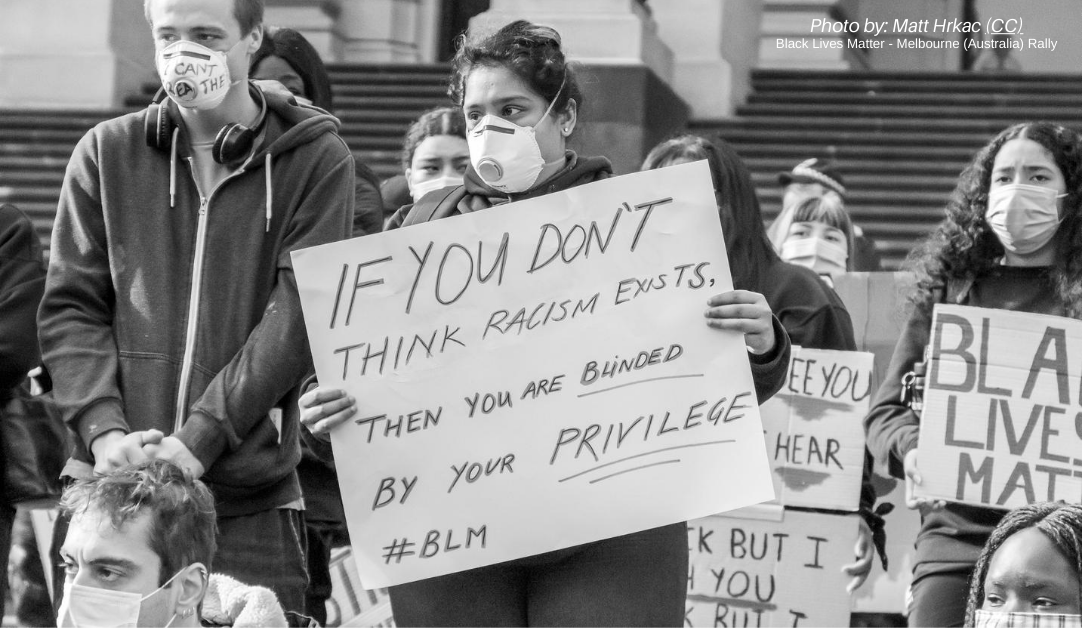As the national discussion surrounding the Black Lives Matter movement has increased exponentially since the murder of George Floyd in Minnesota this past May and, most recently, the shooting of Jacob Blake in Wisconsin, many independent schools have found themselves engaged in uncomfortable conversations.
BIPOC (Black, Indigenous and People of Color) students, alumni and faculty are at the forefront in challenging their educational institutions to become active participants in conversations surrounding accountability and curricular change. They are demanding that heads of school and respective leadership teams take action. White students, alumni and faculty have added their voices to these conversations and are demanding change.
I believe that this unique time in American history is an opportunity for white America, including myself, to examine our role in a racist system. As a white, middle-aged male, my white privilege allows me to move through daily life in a very different manner than BIPOC Americans. I am entirely supportive of efforts to end discrimination, but upon further reflection, I’ve realized that I have remained largely silent. My well wishes have seldom been tied to action.
To truly enable change, white people need to embrace anti-racism work, which means focusing on deep, often uncomfortable self-reflection, as it relates to how we speak about and contribute to upholding racist and oppressive systems. It’s not easy, but it’s integral to truly challenging and changing unspoken attitudes and behaviors around white privilege.
Mark Cuban, the majority owner of the Dallas Mavericks, billionaire investor and Shark Tank star spoke bluntly about white privilege to The New York Times Magazine (8/16/20). He summed it up well, saying, “White people don’t like to talk about race. It’s uncomfortable for a white person to say the term ‘white race’ or ‘white people,’ because there’s an immediate association with white supremacists. And when you use the term ‘white privilege,’ people get defensive. ‘I can’t be a racist.’ We try to say, ‘I see everybody the same.’”
Cuban’s words resonated with me. Talking about race is very uncomfortable.
Over the past few months, I’ve examined the numerous ways that my white privilege manifests itself in my life, both in action and in thought. For example, my friend group mirrors myself and is demonstrative of my white-centric world. Why is that? It’s clear that I surround myself with people who look exactly like me and live in ways similar to me.
What do I mean by that? I’m talking about other white people who exist in a world ignorant of the role that their race plays in their daily lives. That’s a problem that I need to do something about. It’s uncomfortable to realize this. I can imagine how these same considerations may be equally challenging and uncomfortable for an educational community. This is the moment to fully embrace such discomfort.
Many schools and corporations have posted statements of standing with the Black Lives Matter movement. Such messages are important, but schools and their leaders need to go beyond statements of support. The new academic year, one that is for many remote or in a hybrid learning model, will bring challenges, especially as we do the hard work of creating true equity in education.
It will be critically important for your school leadership team to approach conversations about race, equity and inclusion and create clear, strategic plans to address them with a high degree of transparency.
Over the past few months from conversations I’ve had with school leaders, from NAIS-related blogs I’ve read and by participating in AISAP’s Annual Virtual Institute, I’ve seen schools taking unprecedented strides as they approach anti-racism work. They have started asking themselves the following questions.
- Who on our school leadership team (Head of School, Division Heads, Director of Diversity, Dean of Students, CFO, COO, etc.) is uniquely qualified to lead these internal and external discussions?
- Will we have the need to hire an external facilitator to help steward our conversations?
- Do we already have a task force on race, equity and inclusion? If not, should we create one?
These past months I’ve done a lot of listening and learning. It’s clear to me that in order for institutional change to happen that it’s crucial to be open and honest with your community about the steps you are taking to address issues of social justice, equity and inclusion so that school leaders, who are often white and farther removed, are not the sole decision makers.
By outlining specific challenges your school is facing, you can carefully determine the outcomes you are envisioning and share your plans. Ask yourself:
- How are you examining your school’s curriculum, programs and policies?
- How will it be more inclusive of BIPOC history, culture and issues?
- What about the LGBTQ+ community, including Black transgender students, or differently abled people?
While I am not an anti-racism expert, from my own reading and observation, I believe how you communicate will be critically important. Use concise, specific language that directly addresses concerns of BIPOC students and alumni. I recommend that you are equally transparent about your school’s plans to recruit and retain faculty and staff of color.
Communications need to be easily accessible for both your internal and external communities to access. Create a webpage specific to your approach with details on steps you are taking, any virtual or in-person community events for feedback, dialogue and/or listening, task force membership, etc. Link it to your homepage, admissions and alumni pages so people can easily and quickly find it.
Ultimately, as an educational institution, you owe it to your school’s BIPOC – students, parents, faculty, alumni — to address all aspects of institutional racism that ripple through your predominantly white institution. By avoiding these conversations, you are doing a disservice to your entire community.
What is your school doing to address these issues? I welcome your feedback as a comment to further the conversation.

